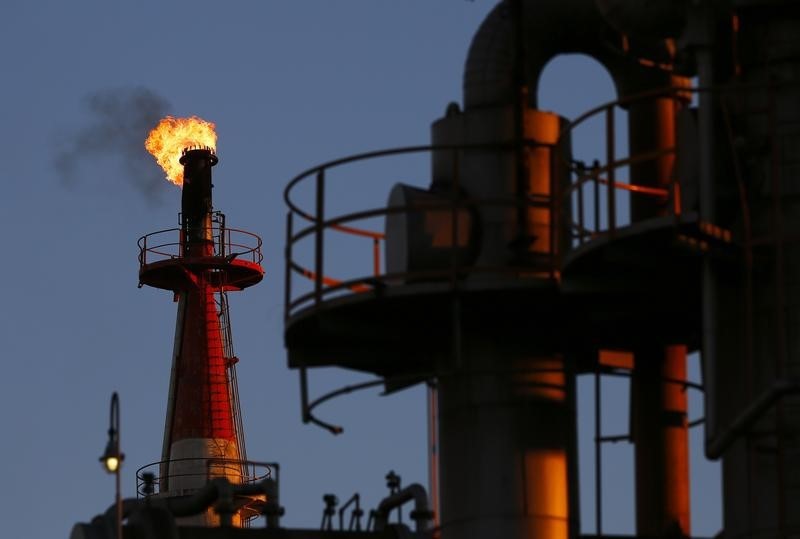By Rod Nickel and Nia Williams
(Reuters) – Drought in the western Canadian province of Alberta is stretching into its fourth year and farmers and oil companies are planning for water restrictions that threaten production of wheat, beef and crude.
The severe conditions have prompted Alberta to open water-sharing negotiations among licence-holders for the first time in two decades, hoping to salvage output from two of its biggest industries.
Alberta, which relies on melting snow and precipitation for most of its water supply, has allocated water since 1894. That system prioritises those who have held licences the longest, although holders rarely exercise that right.
Alberta’s water talks underline the difficult compromises facing resource-rich regions adapting to extreme weather. Hydrologists say the future will bring Alberta more rain instead of snow due to climate change, which will strain summer water supplies.
The province produces most of Canada’s oil, and beef, plus big wheat and canola harvests, much of which it exports.
Irrigation to grow crops in dry areas accounts for 46% of Alberta’s water allocation, with oil and gas using 10%.
Reuters spoke with more than a dozen farm, energy and government officials and found those industries preparing for the drought to potentially scale back production and raise costs.
Drought could cause double-digit declines in Alberta’s wheat yields, based on crop production data from the past two decades. Oil producers are making costly contingency plans to store more water on site and truck water across the province.
Brad Deleeuw, who manages the 5,500-head Delta Cattle feedlot near Coaldale, Alberta, said the impact of water scarcity “could be huge.”
Deleeuw will prioritize watering cattle over irrigating his wheat, corn and barley, but that shift will likely reduce yields.
“You’d go from a black situation to a red situation pretty quick,” Deleeuw said, referring to financial losses.
If he must import significantly more expensive cattle feed this summer from the U.S. to make up for smaller Canadian crops, Deleeuw said he would have to reduce how many cattle Delta fattens for slaughter by Cargill and JBS.
Drought contributed to Canada’s beef herd shrinking this year to its smallest on record, according to Statistics Canada.
Snow water equivalent, which measures water content of mountain snowpack, was down 40% as of March 5 from a year earlier in southern Alberta’s St. Mary River basin. The nearby Waterton basin was down 27%, according to provincial and federal government data.
CROP HIT
Some 70% of Canada is abnormally dry or in drought, according to the government, with the driest conditions in Alberta and British Columbia.
Alberta’s largest-ever water-sharing talks could result in major consumers agreeing in early April to share water voluntarily with others downstream, environment ministry spokesperson Ryan Fournier said. If conditions remain dire, the province could declare an emergency and is working on a plan involving additional steps, Fournier said.
In 2001, the last time water-sharing negotiations happened, Alberta’s durum wheat yield was 22 bushels per acre, down 37% from the previous five-year average, according to Statistics Canada. In dry 2021, spring wheat yield fell 35% while barley yield dropped 36% year-over-year. The vast majority of Alberta’s grain grows on dry land, not irrigated land.
Alex Ostrop, who farms near Lethbridge, is bracing to make do with much less water to irrigate fields. In 2001, his district’s water allocation was eight inches per acre or 38% less than what Ostrop used last year.
“Commodity prices are down generally – (this year) would be a double whammy of lower commodity prices and reduced yields,” Ostrop said.
COSTLY CRUDE
For oil companies, dry conditions may elevate costs by forcing them to shift drilling to sites with water access or to truck water, said Tristan Goodman, CEO of the Explorers and Producers Association of Canada. Companies will not drill if wells get too expensive, he said.
Oil producers are renting on-site water storage structures known as C-rings and other swimming pool-sized spaces, drilling company Trican Well Service (OTC:) said.
“You’re seeing customers start to really think about how they’re going to be managing water months in advance – they just haven’t had to worry about that before,” Trican CEO Bradley Fedora told analysts in February.
For now, parts of Alberta and British Columbia with the most conventional drilling and fracking have manageable water levels, Goodman said.
Drilled wells did not decline in the dry years 2001 and 2017, according to data from industry group Enserva.
Shell (LON:) is putting water contingency plans in place for its Alberta wells, spokesperson Stephen Doolan told Reuters, declining to give details. Suncor Energy (NYSE:) told analysts the drought has prompted it to plan a water-treatment plant in its oil sands operations for the end of this decade.
With Alberta possibly heading to a drier future, the province is spending C$933 million ($691.32 million) to expand irrigation. That means Alberta will spread limited water supply over 230,000 additional acres, but the upgrade will reduce evaporation by converting open canals to pipelines, Alberta Agriculture Minister RJ Sigurdson said.
Oil and gas producers are maximizing efforts to store and recycle water, with all eyes on the skies, said Ken Wagner, CEO of Fraction Energy Services, which rents water storage equipment.
“It’s definitely top of everybody’s mind. We need some more snow and we need big rain.”
($1 = 1.3496 Canadian dollars)
Read the full article here


